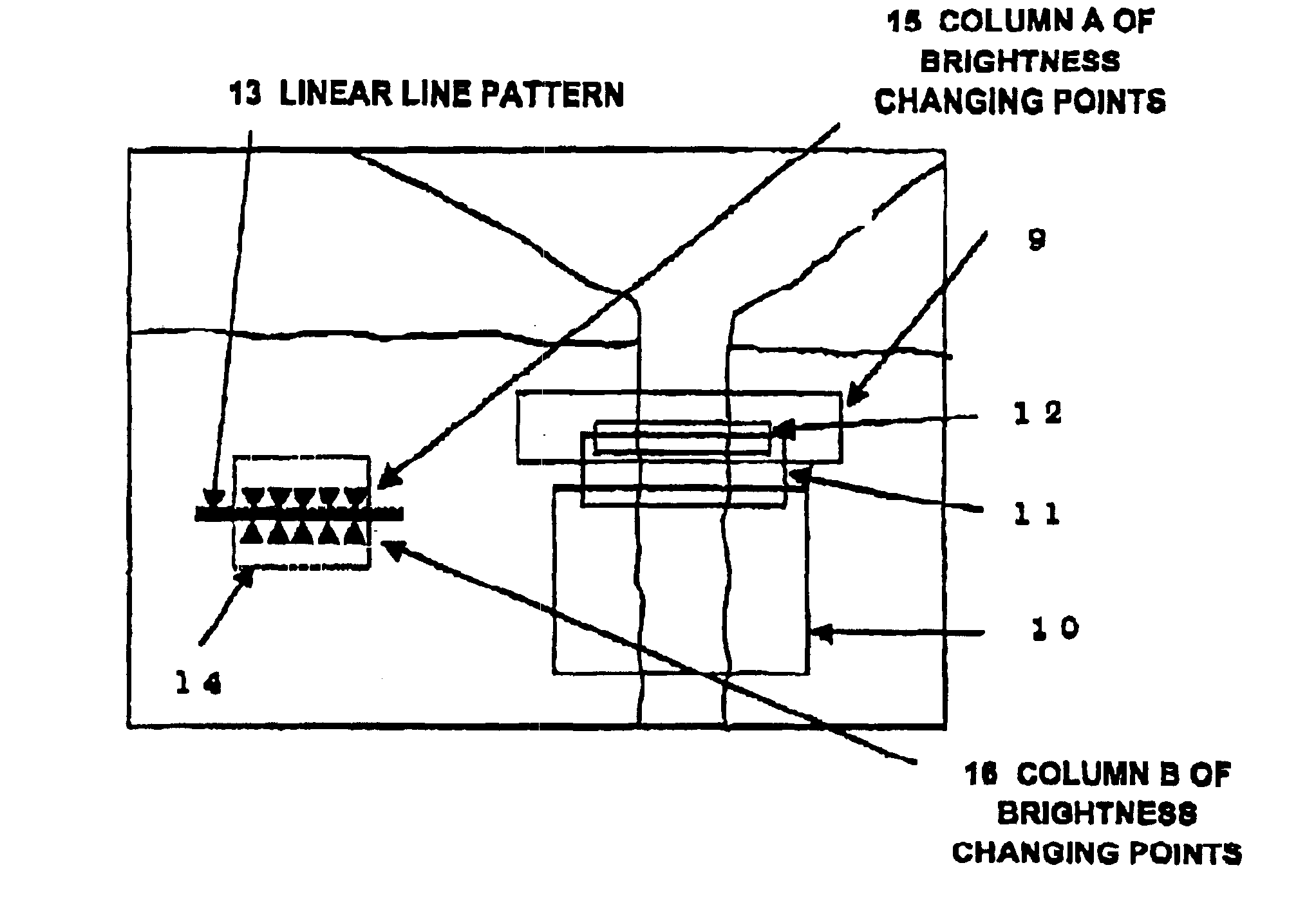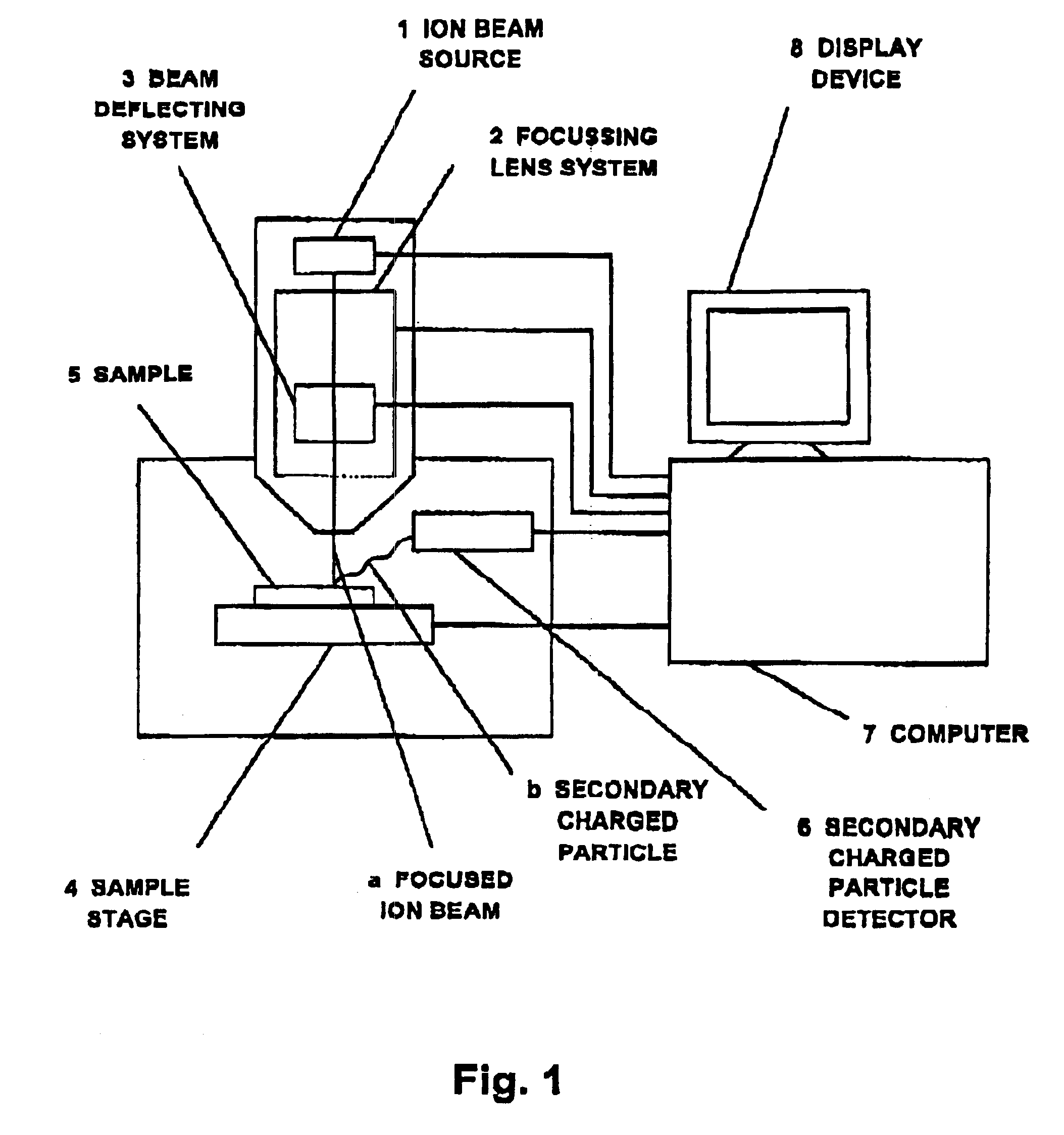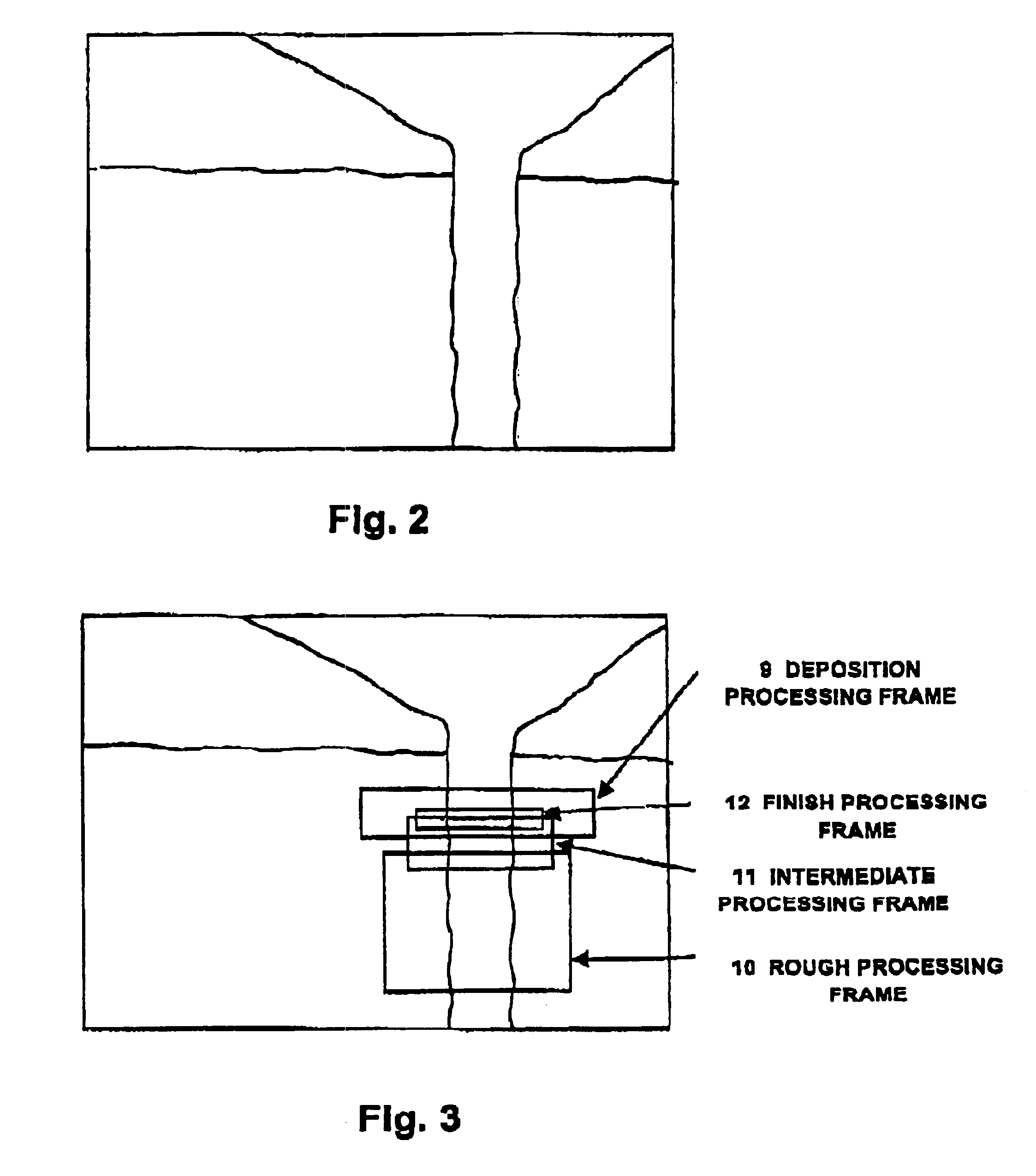Focused ion beam apparatus
a technology of focusing ion beam and focusing beam, which is applied in the field of focused ion beam apparatuses, can solve the problems of difficult to correct drifts by pattern matching technique, difficulty in conducting a specified fine processing, and limitation of hardware improvement, so as to facilitate recognition of patterns and easy to obtain the position of linear lines. , the effect of easy recognition
- Summary
- Abstract
- Description
- Claims
- Application Information
AI Technical Summary
Benefits of technology
Problems solved by technology
Method used
Image
Examples
Embodiment Construction
[0031]Preferred embodiments of the present invention will be described below with reference to the accompanying drawings.
[0032]FIG. 1 schematically shows a structure of a focused ion beam system in accordance with an embodiment of the present invention. The focused ion beam system includes a focused ion beam source 1 that generates an ion beam a. The ion beam a passes through a focusing lens system 2 and a beam deflection system 3, and is irradiated on a sample 5 that is mounted on a sample stage 4. When the ion beam a passes through the focusing lens system 2, the ion beam a is converged by the lens effect of the focusing lens system 2 and irradiated as a focused ion beam on the sample 5. The focusing lens system 2 includes a variable aperture switching function that provides a plurality of different aperture diameters. By changing settings at the focusing lens system 2, the beam current of the focused ion beam a irradiated on the sample 5 can be changed. Secondary charged particle...
PUM
 Login to View More
Login to View More Abstract
Description
Claims
Application Information
 Login to View More
Login to View More - R&D
- Intellectual Property
- Life Sciences
- Materials
- Tech Scout
- Unparalleled Data Quality
- Higher Quality Content
- 60% Fewer Hallucinations
Browse by: Latest US Patents, China's latest patents, Technical Efficacy Thesaurus, Application Domain, Technology Topic, Popular Technical Reports.
© 2025 PatSnap. All rights reserved.Legal|Privacy policy|Modern Slavery Act Transparency Statement|Sitemap|About US| Contact US: help@patsnap.com



